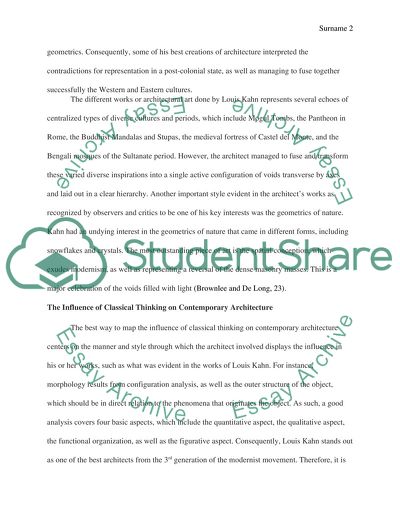Cite this document
(Louis Kahn's Approaches to Architectural Form and Materiality Essay Example | Topics and Well Written Essays - 1250 words, n.d.)
Louis Kahn's Approaches to Architectural Form and Materiality Essay Example | Topics and Well Written Essays - 1250 words. https://studentshare.org/architecture/1873456-louis-kahns-approaches-to-architectural-form-and-materiality
Louis Kahn's Approaches to Architectural Form and Materiality Essay Example | Topics and Well Written Essays - 1250 words. https://studentshare.org/architecture/1873456-louis-kahns-approaches-to-architectural-form-and-materiality
(Louis Kahn'S Approaches to Architectural Form and Materiality Essay Example | Topics and Well Written Essays - 1250 Words)
Louis Kahn'S Approaches to Architectural Form and Materiality Essay Example | Topics and Well Written Essays - 1250 Words. https://studentshare.org/architecture/1873456-louis-kahns-approaches-to-architectural-form-and-materiality.
Louis Kahn'S Approaches to Architectural Form and Materiality Essay Example | Topics and Well Written Essays - 1250 Words. https://studentshare.org/architecture/1873456-louis-kahns-approaches-to-architectural-form-and-materiality.
“Louis Kahn'S Approaches to Architectural Form and Materiality Essay Example | Topics and Well Written Essays - 1250 Words”. https://studentshare.org/architecture/1873456-louis-kahns-approaches-to-architectural-form-and-materiality.


